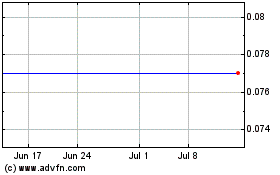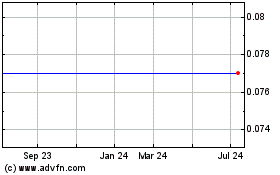Otonomy, Inc. (Nasdaq: OTIC), a biopharmaceutical company
dedicated to the development of innovative therapeutics for
neurotology, today announced positive top-line results from the
Phase 1/2 clinical trial of OTO-413 in subjects with
speech-in-noise hearing difficulty. The randomized, double-blind,
placebo-controlled trial demonstrated that a single intratympanic
injection of OTO-413, a sustained exposure formulation of
brain-derived neurotrophic factor (BDNF), was well-tolerated across
all dose cohorts. Furthermore, there was demonstration of
therapeutic activity of OTO-413 versus placebo across multiple
clinically-validated speech-in-noise hearing tests at consecutive
time points (Days 57 and 85). Based on these results, the company
plans to continue development of OTO-413 for the treatment of
hearing loss.
Assessment of OTO-413 Therapeutic Activity
All subjects enrolled in this trial self-reported hearing
difficulty in a noisy environment that was confirmed by
speech-in-noise (SIN) testing. Subjects could also have up to
moderately-severe hearing loss by standard testing in a quiet
background. Multiple clinically-validated SIN hearing tests
including Digits-in-Noise (DIN), Words-in-Noise (WIN), and American
English Matrix test were administered at baseline and following
treatment at Day 15, 29, 57, and 85. The assessment of therapeutic
activity is based on demonstration of a clinically meaningful
improvement from baseline according to the thresholds utilized for
each of the SIN tests. The top-line results below include the 9
subjects from the OTO-413 high dose (0.3 mg) cohort with test
results on both Day 57 and Day 85 and 8 placebo subjects pooled
from the last 3 dose cohorts.
- 6 out of 9 (67%) OTO-413 subjects demonstrated a
clinically-meaningful improvement on at least one of the three SIN
tests at both Days 57 and 85 versus 0 out of 8 (0%) for
placebo.
- 3 out of 9 (33%) OTO-413 subjects demonstrated a
clinically-meaningful improvement by two or more different SIN
tests at both Days 57 and 85 versus 0 out of 8 (0%) for
placebo.
- Considering the American English Matrix test that mimics a real
world setting by using short sentences in background noise, 4 out
of 9 (44%) OTO-413 subjects showed a clinically-meaningful
improvement at both Days 57 and 85 compared to 0 out of 7 (0%)
placebo subjects showing a clinically-meaningful improvement at any
single time point.
- Most of the patients enrolled in this trial also had
moderately-severe hearing loss by standard testing in a quiet
background. The responder rate for OTO-413 was equally favorable in
this subset with 5 out of 7 (71%) OTO-413 subjects demonstrating a
clinically-meaningful improvement in at least one SIN test and 3
out of 7 (43%) responding by two or more tests at both Days 57 and
85 compared to 0 out of 6 (0%) placebo subjects.
- Improvements from baseline were also observed for multiple
other exploratory endpoints and for OTO-413 treated subjects in the
lower dose cohorts.
In summary, Otonomy believes that these higher responder rates
for OTO-413 compared to placebo at two consecutive time points
across multiple SIN tests demonstrates therapeutic activity and
supports continued development of OTO-413 for the treatment of
hearing loss.
OTO-413 Safety Evaluation
A total of 29 subjects were treated with OTO-413 across four
ascending dose cohorts (0.01 mg, 0.03 mg, 0.10 mg and 0.30 mg) with
a similar frequency of adverse events (AEs) reported as for placebo
subjects. There was no apparent impact of OTO-413 dose on AE
incidence, no serious AEs reported and no patients who discontinued
the trial due to an AE. Otonomy believes these results demonstrate
that a single intratympanic injection of OTO-413 was
well-tolerated.
“Difficulty hearing a conversation with noise in the background
is a common complaint by patients presenting for hearing loss
treatment and this is only expected to grow as the population ages
and noise exposure in our society continues to increase,” said
Barbara Shinn-Cunningham, Ph.D., Director, Carnegie Mellon
Neuroscience Institute and Cowan Professor of Auditory
Neuroscience, Biomedical Engineering, Psychology, and Electrical
& Computer Engineering at Carnegie Mellon University.
“Extensive research conducted over the last decade suggests that
damage to cochlear synapses plays a role in this speech-in-noise
hearing difficulty. Treatment with a neurotrophic factor such as
BDNF offers potential for repair. I am encouraged by these initial
results for OTO-413 across multiple speech-in-noise hearing tests
and look forward to its continued development as an option for
patients to regain functional hearing.”
“We are excited to announce these positive top-line clinical
results for OTO-413 that support its continued development for
patients with hearing loss,” said David A. Weber, Ph.D., president
and CEO of Otonomy. “It is also a great way to build on the
successful clinical trial results we announced this summer for
OTO-313 in tinnitus, and further affirms our leading position in
the emerging neurotology field. We continue to look forward to our
third clinical catalyst with results from the Phase 3 trial of
OTIVIDEX® in Ménière’s disease still expected in the first quarter
of 2021.”
Webcast and Conference Call
Otonomy management will host a webcast and conference call
regarding these clinical results at 8 a.m. ET today. The live call
may be accessed by dialing (877) 305-6769 for domestic callers and
(678) 562-4239 for international callers with conference ID code
number: 9882298. A live webcast of the call will be available
online in the investor relations section of Otonomy’s website at
www.otonomy.com and will be archived there for 30 days.
About Speech-in-Noise Hearing Difficulty
Recent scientific advances have shown that the loss of synaptic
connections between inner ear hair cells and auditory nerve fibers
contributes to hearing impairment. This cochlear synaptopathy is
proposed as an underlying pathology in age-related and
noise-induced hearing loss and is believed to contribute to the
common difficulty of hearing speech in the presence of background
noise. Overall, there are more than 50 million people in the U.S.
with acquired hearing loss including a significant proportion
experiencing speech-in-noise hearing difficulty, which can lead to
social isolation, depression and early cognitive decline.
About the Phase 1/2 Trial
The Phase 1/2 trial was primarily intended to evaluate the
safety of ascending doses of OTO-413 administered by a single
intratympanic injection and secondarily to assess a clinical signal
for OTO-413 across multiple speech-in-noise (SIN) hearing tests and
other exploratory efficacy endpoints. The first three dose cohorts
(0.01 mg, 0.03 mg, and 0.10 mg) each enrolled 8 subjects with a
fourth dose cohort (0.30 mg) expanded to enroll 15 subjects. All
cohorts were randomized 3:1 for OTO-413 or placebo. Subjects were
evaluated at screening and baseline (pre-dose) and then again at
Day 15, Day 29, Day 57 and Day 85 following treatment. The SIN
tests included the Digits-in-Noise (DIN) test, Words-in-Noise (WIN)
test, and American English Matrix test that uses sentences in
background noise. Each of these SIN tests has been
clinically-validated with a threshold level of improvement
considered clinically meaningful. All 29 subjects treated with
OTO-413 and 10 placebo subjects were included in the safety
assessment. The top-line assessment of therapeutic activity was
conducted in 9 evaluable OTO-413 subjects from the high dose cohort
compared to 8 placebo subjects pooled from the last three dose
cohorts.
About OTO-413
OTO-413 is a proprietary, sustained-exposure formulation of
brain-derived neurotrophic factor (BDNF), which is a naturally
occurring protein involved in neuron growth and repair. Nonclinical
studies have demonstrated that local administration of BDNF repairs
the connections between inner hair cells and auditory nerve fibers
in the cochlea that are damaged due to noise trauma or exposure to
ototoxic chemicals. Furthermore, Otonomy has demonstrated in
preclinical studies that repair of synaptic connections is
associated with a restoration of hearing function. The initial
indication for OTO-413 is speech-in-noise hearing difficulty, a
type of hearing loss believed to be caused by cochlear
synaptopathy.
About OtonomyOtonomy is a biopharmaceutical
company dedicated to the development of innovative therapeutics for
neurotology. The company pioneered the application of drug delivery
technology to the ear in order to develop products that achieve
sustained drug exposure from a single local administration. This
approach is covered by a broad patent estate and is being utilized
to develop a pipeline of products addressing important unmet
medical needs including Ménière’s disease, hearing loss, and
tinnitus. For additional information please visit
www.otonomy.com.
Cautionary Note Regarding Forward Looking
Statements
This press release contains forward-looking statements within
the meaning of the Private Securities Litigation Reform Act of
1995. Forward-looking statements generally relate to future events
or the future financial or operating performance of Otonomy.
Forward-looking statements in this press release include, but are
not limited to, expectations regarding the potential benefits,
patient population, development activity and advancement of
Otonomy’s clinical programs; statements relating to the timing of
results of ongoing clinical trials; statements relating to
potential treatment for patients suffering from hearing loss;
statements by Barbara Shinn-Cunningham, Ph.D.; and statements by
Otonomy’s president and CEO. Otonomy’s expectations regarding these
matters may not materialize, and actual results in future periods
are subject to risks and uncertainties. Actual results may differ
materially from those indicated by these forward-looking statements
as a result of these risks and uncertainties, including but not
limited to: delays and disruption resulting from
the COVID-19 pandemic and governmental responses to the
pandemic, including current and future impacts to Otonomy’s
operations, the manufacturing of its product candidates, the
progression of its current clinical trials, enrollment in its
current and future clinical trials and patient conduct and
compliance; Otonomy’s ability to obtain additional financing;
Otonomy’s dependence on the regulatory success and advancement of
its product candidates; the uncertainties inherent in the clinical
drug development process, including, without limitation, Otonomy’s
ability to adequately demonstrate the safety and efficacy of its
product candidates, and the nonclinical and clinical results for
its product candidates, which may not support further development;
the integrity of patient-reported outcomes in its current and
future clinical trials; side effects or adverse events associated
with Otonomy’s product candidates; competition in the
biopharmaceutical industry; Otonomy’s dependence on third parties
to conduct nonclinical studies and clinical trials; Otonomy’s
ability to protect its intellectual property in the United States
and throughout the world; expectations regarding potential therapy
benefits, market size, opportunity and growth; Otonomy’s ability to
manage operating expenses; implementation of Otonomy’s business
model and strategic plans for its business, products and
technology; general economic and market conditions; and other
risks. Information regarding the foregoing and additional risks may
be found in the section entitled "Risk Factors" in Otonomy’s
Quarterly Report on Form 10-Q filed with the Securities and
Exchange Commission (the "SEC") on November 4, 2020, and Otonomy’s
future reports to be filed with the SEC. The forward-looking
statements in this press release are based on information available
to Otonomy as of the date hereof. Otonomy disclaims any obligation
to update any forward-looking statements, except as required by
law.
Contacts:
Media InquiriesSpectrum ScienceChloé-Anne RamseyVice
President404.865.3601cramsey@spectrumscience.com
Investor InquiriesWestwicke ICRRobert H. UhlManaging
Director858.356.5932robert.uhl@westwicke.com
Otonomy (NASDAQ:OTIC)
Historical Stock Chart
From Feb 2025 to Mar 2025

Otonomy (NASDAQ:OTIC)
Historical Stock Chart
From Mar 2024 to Mar 2025
